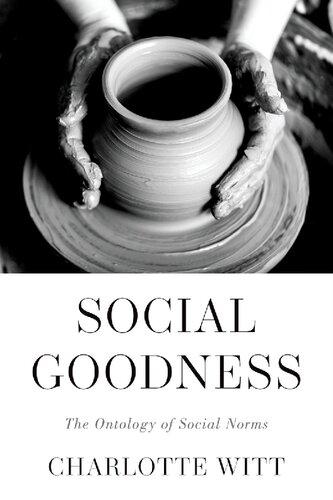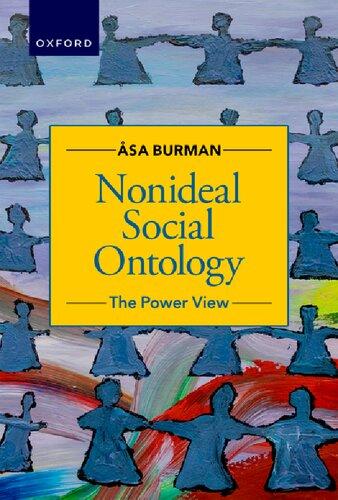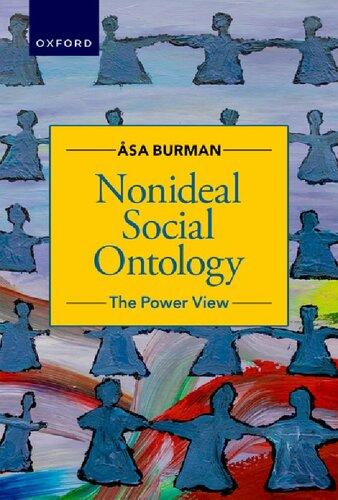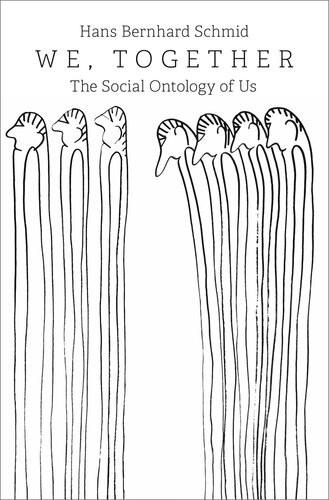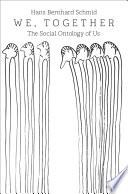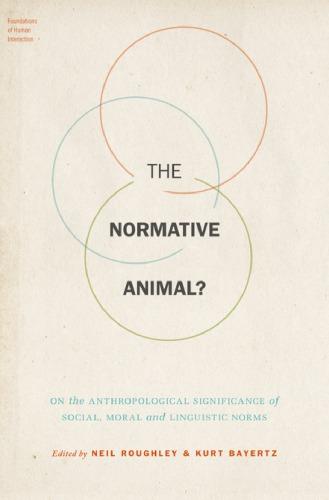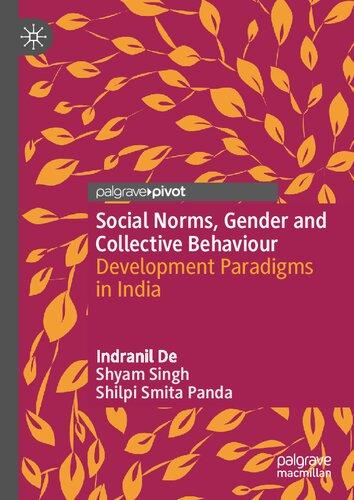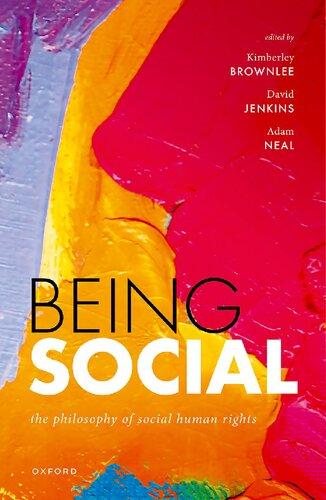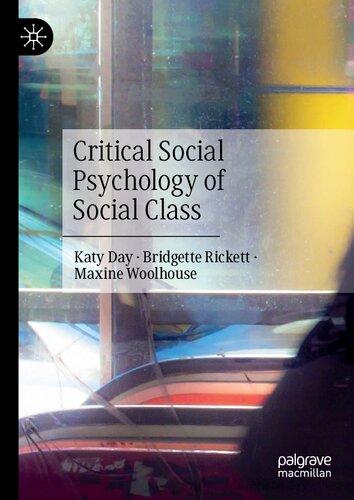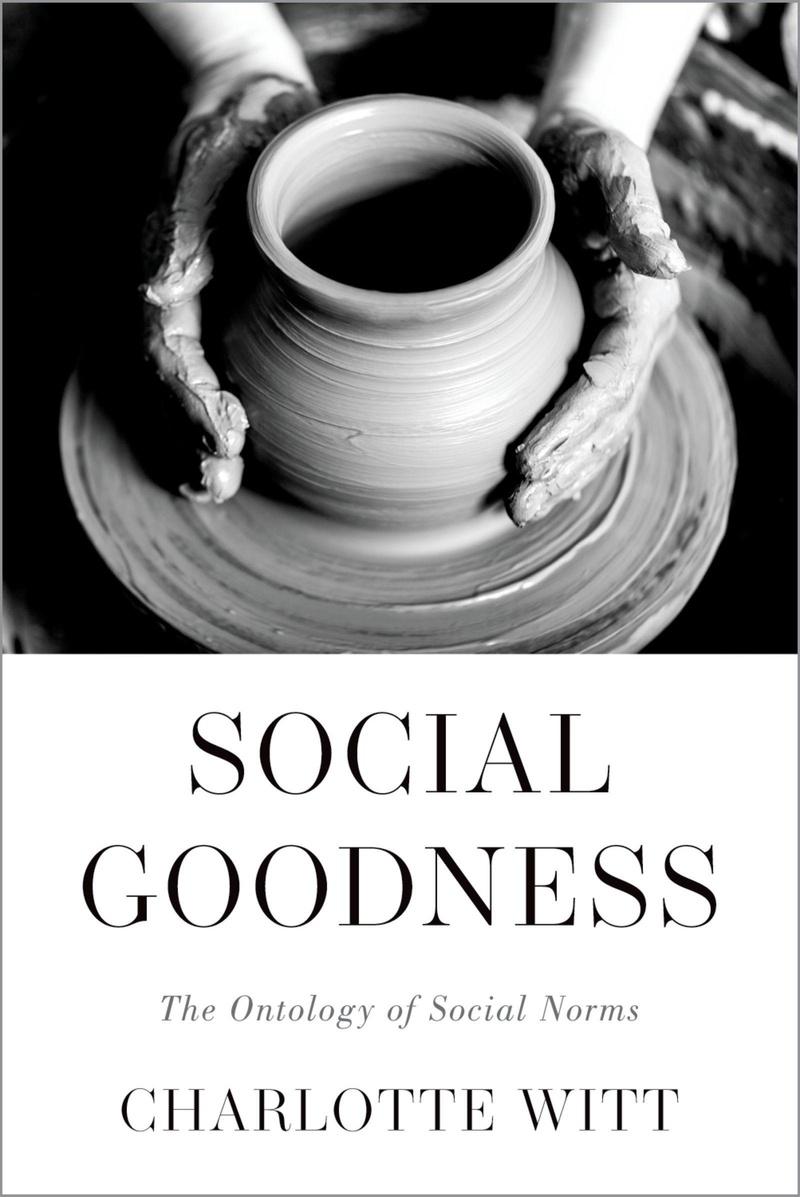The Great Puzzle of Social Norms
“The great puzzle of social norms is not why people obey them, even when it is not in their self-interest to do so. It is, how do shared standards of conduct ever acquire their normativity to begin with? Once we understand this, there is no further difficulty in understanding the motive to obey them. We obey them because we believe that we ought to.” (191)
Elizabeth Anderson
In Social Goodness I propose an answer to Elizabeth Anderson’s question, “How do shared standards of conduct ever acquire their normativity to begin with?” This is the central puzzle of social normativity. As a mother, I ought to put my children first, but as an academic I ought to pursue knowledge above all. Where do these “oughts” come from? What is the source of their normativity? Are they different from ethical or prudential norms, and if so, how are they different? And why do they attach to me, seemingly independent of whether I subscribe to them? As Anderson says, our tendency to conform to social norms is a consequence of our recognition that we ought to do so; it is a symptom and not a cause. What then is the source of the normativity of social role norms?1
1 I offered an early version of my answer to this question in my paper “What Explains Social Role Normativity?” in Hufendiek et al.
Social Goodness. Charlotte Witt, Oxford University Press. © Oxford University Press 2023.
DOI: 10.1093/oso/9780197574799.003.0001
Before we begin to address that question, it is useful to pause for a moment to consider the significance and omnipresence of social roles. Let’s consider the personal impact of social norms. We are often confronted with normative demands that appear to have a source external to ourselves. That is puzzling, because we also often also think that demands at the level of social norms are a matter of our own choices and preferences. After all, isn’t it up to me whether I ought to conform to my culture’s gendered norms of appearance or maternal norms? We might think the right answer to this question is that it is my choice and up to me to decide. Indeed, we might think that the only legitimate origin of normativity is the individual and her attitudes or preferences. But if so, then why do we so often find ourselves following norms that we don’t endorse and of which we are critical? Thinking through the issue of the source of social normativity can provide a better understanding of our own normative situation, its inner contradictions, and how it works. Spoiler alert: Our preferences, endorsements, or attitudes are not the source of normativity of the social norms we stand under, or so I argue in this book.
In what follows I am particularly concerned to understand two things. First, what is the source or basis for social role normativity? To borrow a handy term (Brennan et al. 24), where does the normative “oomph” of social norms come from? Second, I want to understand why particular individuals are responsive to and evaluable under particular social norms. Note that neither of these are causal questions; I am not going to provide a causal explanation of either phenomenon. Rather, I am interested in the basis for the normativity of social roles and the normativity of the demands placed on individuals by virtue of the social position they occupy. Giving a causal explanation of the normative contours of our social world is a worthy endeavor, but it is not my task here. Causal explanations address what we, in fact, do or will do, but they do not explain why we ought to do what we in fact do or will do, which is my topic here. But is there a question about social norms other than the causal
question? Is there a distinctive form of social normativity? Is social normativity real?
Is Social Normativity Real?
Thus far I have been assuming that social role normativity is a real category of normative obligation—that there is something here to explain or to understand. But it may seem reasonable to ask whether social normativity is a distinct (or real) category of normativity. Perhaps what a mother ought to do because she is a mother just follows from the special moral duty we have to family members? Maybe the ought of social norms is just an ethical ought? Or alternatively, perhaps social norms are merely prudential rules that allow us to avoid punishment or seem to offer the best payoff. Perhaps a mother figures out what she ought to do by considering which course of action will lead to better results or outcomes, for herself or for others, than the other possible courses of action. Maybe the ought of social norms is just a prudential ought?
In either case the suggestion is that social normativity is not a distinct type of normativity. Rather, social norms are either ethical norms applied to concrete situations, the applied ethics view, or social norms reflect a type of prudential thinking in a context, the prudential norm view. In either case social normativity turns out not to be a distinct type of genuine normativity. If the applied ethics view were true, then there would be no need to explain the source of normativity of social role norms, because it would be inherited from the ethical norms. If the prudential thinking view were right, then there also would be no normative oomph to be explained. End of my project!
One way to think about social norms, like those governing a mother’s maternal activity, is as an application of moral principles governing familial relationships to a particular relationship in a particular culture. The idea is of a general rule and its application
in a context. The normativity attaches to the moral principle itself, and only derivatively to the realization or instantiation of it. Strictly speaking the normativity in question is ethical, and while there may be lots of questions about the source of ethical norms, there are no special questions about the source of social norms because their normativity derives from the ethical normativity—wherever that comes from.
However, this way of thinking about social normativity is not adequate to the phenomena in several ways. First, not all social norms fit the applied ethics view because some social norms are prima facie not in accordance with, much less applications of, ethical principles. Social norms are often limiting, oppressive, and unjust; including some of the norms one ought to enact by virtue of one’s social position. For example, one might think (as I do) that many gendered norms are like that. Indeed, many social contexts are unjust, and the injustice is often lodged at least partially in the governing social role norms. And so, it is hard to see how the normativity of social roles in general is to be explained by the ethical principles they realize in a social context. The important fact that many social role norms, which we ought to follow given our social positions, are unjust or oppressive needs to be accounted for in our explanation of the normativity of social role norms. But it is difficult to see how there could be a critique of a social norm that you ought to be responsive to, given your social position, if the normativity of the norm rested on nothing but an application of ethical principle. And another requirement facing our account is that it must explain people who are critical of the norms they stand under as well as those who are social role nonconformers. These are an important part of the phenomena of social role normativity.
A second way that social norms do not fit the applied ethics model is that social normativity includes normatively evaluable activities that do not fall within the range of standard ethical theories. Artisanal examples exemplify this point: around here there is a way the carpenter ought to make a corner, but this is not an ought-to
that is an application of a purely ethical principle to a context. There is no ethics of corners! So, this is another way in which there is a poor fit between the range of phenomena covered by the concept of social normativity and the explanation of its normativity as applied ethics.
The idea that social normativity is applied ethics does not do a good job of accounting for the full range of phenomena that we would want it to cover. So, I suggest that we not think that the source of social role normativity derives from the moral principles that it exemplifies in concrete situations. And I suggest further that we look for another source of social role normativity. This is my project in this book. However, one might react to the case I have made against the applied ethics view of the source of social role normativity and conclude that social norms are really codified forms of prudential reasoning and lack any genuine normative oomph. If that were the case, then again there would be no need to try to explain the source of their normativity beyond a desire to avoid punishment or garner reward. There would be nothing more to explain.
Just as it is a mistake to think that social role normativity is best explained as the application of ethical norms to a concrete social context and that the normativity derives from the ethical norm, so too it is a mistake to think that social norms have merely prudential value. It is simply not the case that social role obligations track rewards and punishments. What I ought to do as a mother is not explicable in terms of seeking rewards and avoiding punishments— even though what I actually do might well be. What I ought to do as a mother can diverge from what might be best for me prudentially. It might be best for my child, and hence what I ought to do if I called in sick, even though calling in sick might lead to dismissal, lower pay, or a worse schedule. But if I acted prudentially, I would not be acting as I should, given that I am a mother. What I ought to do as an academic might diverge from my prudential best interests. I ought to evaluate students fairly, but in current circumstances it would be prudent for me to give very high grades to all students in
my classes regardless of their performance. The prudential decision and what I ought to do as a teacher diverge. The source of normativity of social roles is not to be found in prudential reasoning or considerations.
Since neither the applied ethics view nor the prudential characterization of the source of normativity of social norms is persuasive, we have good reason to think that there is a genuine question to be addressed concerning the source of the normativity of social roles. Social role normativity is a real category of obligation with genuine normative oomph. But the source of social role normativity remains mysterious. How might we best explain it?
The Artisanal Model
My account of social role normativity takes crafts, such as carpentry or cooking, and arts, such as flute-playing, as central exemplars of social roles. Social roles are teachable methods or ways of doing something in a manner that encodes social knowledge (techniques), and that involve the acquisition of powers or abilities to engage skillfully with the world by employing those techniques (expertise). The normativity is grounded in the function or work to be performed, well or badly, by employing the relevant expertise and techniques. As Aristotle says, “the good and the well is thought to reside in the function (ergon)” (EN, 1.7, 1097b26–27).2 I introduce the term “Afunction” to label this constellation of ideas, which differs in important ways from functional attributions in the social and biological sciences.3
Rather than use examples of paths, borders, or money to set the stage for my inquiry into the normativity that characterizes social roles, I focus on the normatively rich, socially embedded range of
2 Translations of Aristotle are based on Barnes.
3 For an elaboration of this point, see Chapter 2.
techniques or expertise that comprise the arts and crafts. I think that the focus of social ontologists on paths, borders, or money is unfortunate, and leads in a misleading direction on the issue of social role normativity. If one wonders what makes a path, the right path, the one to be taken, then it seems that an individualist response in terms of human preferences or endorsement is the only available one. What could make a path the one to be taken if not the agreement and endorsement of an individual or a group of individuals? Dirt and grass are normatively impoverished. But if, instead, the paradigmatic cases of social roles are artisanal techniques, then there is a much richer set of resources to draw on in our understanding of their normativity. That a particular note is the note to be played, or a tool the very one for the job, is not simply a matter of an agent’s preference or endorsement, or indeed the preference or endorsement of multiple individual agents. There is, in these cases, a technique that serves a function that grounds the normativity. Now, of course, that technique and function exist at all may depend on the existence of human cultures, but their existence does not depend on any proximate preference or endorsement by any individual or group of individuals in the vicinity. In fact, the direction of fit is the reverse: the technique and function that comprise the social role determine what is to be done, that is, what ought to be done by an individual who occupies that social position.
Adapting an idea from Aristotle, I argue that the source of social role normativity lies in the work or function performed by the social agent who occupies a given social position. Being an academic or being a mother is a social position whose occupants are responsive to and evaluable under a set of norms that taken together constitute a social role. Social roles are normatively assessable techniques of doing or making things that are embedded in and reflective of the way we do things around here. And I argue that we are responsive to and evaluable under a particular norm just because we occupy a social position that has that norm as part of the associated social role.
Internalism and Externalism
It is useful to distinguish two general approaches to the question of the source of social role normativity: internalism and externalism.4 I use the term “internalism” to refer to views that develop some version of the idea that both the source of social role normativity and the reason why particular norms attach to particular individuals originate in the same place, namely in the subject or agent herself. Some internalists root the normativity in the preferences of social agents either individually or as a group.5 These are the Humeans. Others explain the normativity in terms of the autonomy or selflegislation of the norms by the agent. These are the Kantians. Hegelians elaborate on this Kantian theme by developing “a social recognitive form of the autonomy model” according to which “each individual is responsible only for what she has authorized others to hold her responsible for” (Brandom 76). What these views share is a
4 Internalism and externalism are used to label opposing views in a wide range of philosophical topics from ethics, to semantics, to philosophy of mind. Here, I use them to label opposing views of the source of social role normativity. Social role normativity is a species of normativity and in what follows I use the term normative externalism to refer to externalism with regard to the source of social role normativity. I hope that my explanation of their use here will ward off possible confusion. See Chapter 2 for a detailed description of the distinction between internalism and externalism and my use of it. In earlier work, I used different terminology to describe an adjacent distinction. There I used the terms “voluntarism” and “ascriptivism” to label two opposing views on how it is that membership in a social kind is established. Voluntarism holds that membership in a social kind requires subscription by the individual, and ascriptivism holds that membership in a social kind is fixed by one’s social position occupancy, the conditions for which are social, often determined by others, and context-specific. My focus in this book is on an adjacent issue that is downriver from the question of what establishes social kind membership; namely, how to explain the source of the normative oomph of social roles. There is an important distinction between the conditions for the occupancy of a social position, like being a carpenter or being a mother, the social role that someone occupying that position ought to perform, and the source of the normativity of that social role. The contrast between internalism and externalism demarcates two explanations of the source of social role normativity rather than the conditions for social kind membership. See Witt, The Metaphysics of Gender, 43–47.
5 I find it useful to associate the different versions of internalism (and externalism) with figures from the history of philosophy, but I don’t intend these associations to stand as interpretations of the philosophers in question. If the historical labels aren’t useful to you, feel free to ignore them.
focus on the subject (or subjects)—her preferences, endorsements, or recognitive attitudes—as the source of normativity, including social role normativity. According to these views, social normativity enters the world through the attitudes of the persons who are subject to the norms. In addition, for internalists an agent is responsive to and evaluable under a social norm because she prefers it, self-legislates it, or authorizes others to hold her responsible for it. So, the internalist has a seamless and integrated explanation for both the origin of social role obligation and the reason why a given individual is responsive to and evaluable under a particular social norm.
I use the term “externalism” to refer to positions that root social role normativity in the social world itself, in its positions, institutions, and larger architecture. The core insight of externalism is that in some circumstances the structure of an enterprise or activity can bring with it normative demands quite independently of the attitudes of those who engage with it. Lawson’s social positioning view sees the process of assigning a person to a social position as at the same time situating the person in relation to others by means of a package of rights and obligations. Other externalists point to games and model social normativity on the rules of a game that one ought to follow if one if playing the game. The idea of normativity as rule following does not depend directly on the attitudes of the players, but rather on the notion that in order to play the game one must follow the rules. Still others argue that social norms are elaborations of biological normativity. While these theories are externalist, they are not the version of externalism that I will develop here.
My version of normative externalism models social role normativity on artisanal normativity. Think about artisanal social roles, like being a carpenter or a baker, and the norms that shape and infuse the techniques that these artisans use, given the functions or the work that they accomplish. Artisanal normativity is not grounded in the artisan’s preferences, endorsements, or recognitive
attitudes; rather it is a matter of proficiency with a learnable technique or expertise. Being a carpenter and being a baker are social roles that are governed by techniques that realize functions and shape activities. Following the technique is what you ought to do, given that you are an artisan of a certain type around here, given that you occupy that social position. There is no additional subjective or internalist requirement to attach social role norms to an individual or to make them (collectively) something that individual ought to do.
Of course, it will often be the case that the carpenter prefers to use a level to square a corner, or a baker endorses weighing out ingredients rather than using cup measurements. Indeed, both carpenter and baker might understand themselves in relation to these identities, and so think that these techniques are to be done because of them. The point is that—for the externalist—these preferences or endorsements are not the factors that explain the normativity of the social role, nor are they the reason that an individual stands under an artisanal norm. Because if the carpenter does not prefer to use a level or a baker does not endorse use of a scale for measuring dry ingredients, they simply are not doing what they ought to do, employing the proper skill or expertise, insofar as they occupy these artisanal social positions. Their preferences or self-legislation do not determine what the right thing to do is; their preferences or self-legislation are not the source of normativity.
There is an understandable tendency to want to explain (or to explain away) social normativity, including social role normativity, in non-normative terms. It might seem strange and excessive that social norms track an irreducible kind of genuine obligation that is distinct from the normativity attaching to ethical principles. The idea adds a layer of normative complexity to the social world. This could be viewed as an entirely unnecessary epicycle or, alternatively, as providing a useful amplification that enriches our normative, ontological, and explanatory resources and vocabularies. In this book I make a case for the latter view.
The explanation of social role normativity on offer here is nonreductive. It does not attempt to explain the source of social role normativity in terms that are not normative. Rather, it takes artisanal norms as exemplifying social role normativity in general, and it attempts to generalize features of the artisanal model to other social roles. These features include the normatively infused notions of expertise and technique (techne) which will be explored in some detail. The notions of technique and expertise also point to the irreducibly social and interpersonal character of our social roles. The artisanal model illustrates the process by which we become skilled experts through habituation under the guidance of an expert who mastered the technique in question. What is passed on is not merely particular processes and practices, but also the standards and norms that are intrinsic to the craft. With the process of habituation comes both specific know-how and a general sense of excellence; what it is to do something well. Moreover, the apprentice also learns the reasons for the various techniques learned or what I will call “know-why.” And this aspect of artisanal transmission lays the groundwork for norm criticism and social role nonconformity.
What Is a Social Role?
Social roles demarcate ways of being human. Examples of social roles include being a carpenter or a baker, being a mother or a father, being a president or a professor, being a woman or being Asian American.6 I begin by emphasizing that social roles are ways
6 In “Role Obligations,” Michael Hardimon focuses on the normative aspect of institutional roles, distinguishing between contractural roles (roles we sign on for) and noncontractural roles (roles we are born into). The latter he restricts to familial and civic roles, saying, “being a member of an ethnic group is not a role” (4). But the arguments Hardimon makes in relation to the legitimacy of obligations in relation to familial social roles also apply to ethnicities, races, and genders. In some contexts ethnicities are social roles and, like race and gender, are closely intertwined with familial roles. I agree with Hardimon’s view that there are social role obligations that are noncontractural, but take the point further here by arguing that the source of social role normativity of both types
of being human rather than characterizing them primarily as a vehicle that establishes kinds of humans, because I want to highlight the idea that these roles normatively structure our social activity. So, even if Mallon is right that social roles are also “central mechanisms of category construction” and thereby directly relevant to the possibility of social scientific knowledge, my interest is in exploring their ontology, on what it is to be a social role rather than approaching social roles in relation to the possibility of social knowledge (The Construction of Human Kinds 58). If one views social roles primarily in relation to social kind construction, then one central issue will be how these kinds can achieve sufficient stability to be objects of social scientific knowledge in a fashion parallel to the way in which natural kinds are objects of scientific knowledge. This is, of course, an important question. But it is not the central question driving my inquiry. I am interested in social roles as normative ways of being human—of being in the social world—and in the puzzle of the source and nature of their normativity.7
Social roles are best viewed as techniques and expertise attached to social positions, and their normativity is grounded in the functions or work they enact. Being a carpenter is a social position that includes mastery of a technique that constitutes expertise (involving tools, materials, and others) that is evaluable in relation to the function of making things out of wood. Being a mother is also a way of being in the world that includes a set of expertise and techniques that are evaluable in relation to the activity
is noncontractural to use his terminology. Hardimon’s distinction between contractural and noncontractural social role obligations blurs the distinctions I draw between the conditions for occupancy of a social position, the social role that someone occupying that position ought to perform and the source of the normativity of the social role.
7 Amie Thomasson proposes a normative model of social groups according to which social group concepts function to normatively structure our lives together. Thomasson’s focus on the normative structure of our lives together bears some resemblance to my project, although her emphasis on self-identification and group membership diverges both from the primacy I assign to social roles and my externalist orientation. Also, unlike Thomasson, my goal is to explain the source of social group or social role normativity. See “The Ontology of Social Groups”.
of mothering. A bit more controversially, I propose that we think of gender and race along the same lines, as social roles, as ways of being human.
Viewing race and gender as social roles, as ways of being human, might seem to strain the resources of the artisanal model. The artisanal metaphor might not seem to be apt or a good fit for these examples. How well do the ideas of expertise and technique fit race and gender? In what sense does being gendered or being raced correlate to a function or to work? As I explain in Chapter 3, the artisanal model includes both arts that result in a product, like carpentry, and those that are realized in an activity, like playing the piano. Like being a mother, being a woman is realized in normatively evaluable activities or techniques rather than in relation to a product.8 Also, the artisanal model seems to lack the ability to represent important aspects of these social roles. What resources does the artisanal model have to represent the hierarchical relations among genders and races? How well does it represent the oppressive relationships among genders and races? In Chapter 7 I explore the resources of the artisanal model to express relationships among social roles, including hierarchical and oppressive relationships.
The term “social role” itself is useful to consider, as it gestures in two directions that will be central for my argument. The idea of a social role underlines the notion that these ways of being a person are communal; whatever else a social role may be, it is a public, shared way of being. This feature counts against individualistic theories of social role normativity. For example, rational choice theory conceives of social norms as informal rules that govern social behavior where the normativity is grounded in either the rationality or self-understanding of individual social agents.9 Some
8 It is possible to interpret the maternal social role in terms of both activities and product, the child, in relation to which the activities are evaluated. However, it is not a part of maternal practice around here to consider a child to be a product.
9 For a useful discussion of rational choice theory and social norms, see Bicchieri et al., “Social Norms.”
rational choice theorists understand the rules as serving specific functions—like solving collective action co-ordination problems, enhancing social welfare, or holding us accountable to one another by enabling praise and blame. Rational choice explanations often characterize adherence to social norms (including social roles) in terms of a payoff maximizing strategy; in this case primarily one of avoiding sanctions. Here the rational self-interest is calculated for each individual separately. Alternatively, game theoretic accounts of social norms are interpersonal, and understand a norm as an equilibrium (e.g., a Nash equilibrium) of a strategic interaction. The latter approach emphasizes the role of mutual expectations in conforming to social norms, but it is the mutual expectations among rational, calculating individuals. My conception of social role normativity, in contrast, is not anchored by individual, intersubjective or group preferences about rules and rule-following. Individual preferences do not play a fundamental role in my explanation of social role normativity.10 Rather than think of our social agency as elaborate poker games in which each player pursues their rational self-interest in a sequence of independent bids, we should think of it instead as comprised of sets of social techniques having multifaceted connections and rich normative content—as exemplified by artisanal and artistic skills and techniques.
The idea of a social role emphasizes the functional character of the normatively assessable activity. It connects the notion of an ergon –a function or work—to that of a norm infused human activity, or, in other words, a technique. A role is a way of being human; a set of normatively infused techniques that we engage with insofar as we occupy social positions that form part of the architecture of the social world (the culture that we inhabit). The notion of a role gestures toward both an activity and its normative dimension, and these are key elements in the phenomenon I address here.
10 My project is to understand and explain the source of normativity of social norms, and it is unclear that rational choice theories focused on individual preferences have the same explanandum.
Each art or craft, each technique, is associated with a function or with a kind of work, and the normativity associated with the notion of a technique is grounded in the specific function or work that is performed. A skilled potter makes good pots, and a good ukulele player plays the ukulele well. My thesis is that social role normativity, in general, is explained by the function, the work or activity to be done, and the related techniques and expertise that constitute a given social role. The function is the work or activity, and the social role is comprised of various techniques and expertise that constitute ways of realizing the function. Collectively, social roles demarcate techniques of living, ways of being human or being a person. It is important to underline the fact that social roles are always local. They are our way of realizing a function; our technique for living; our way of doing things around here.
There are many instrumental norms intertwined in artisanal practices and other social roles, but there are also distinctive, noninstrumental norms that reflect local standards of excellence. Think about cooking norms, which seem to be primary candidates for an instrumental analysis—after all we need to eat. But now also consider the wide variety of cooking techniques that reflect the way we ought to do it—around here. In this context, there are normatively assessable practices and activities that constitute excellent cooking, and that excellence is not explicable in terms of instrumental values. Quite the contrary. The social world is packed with roles that have norms that cannot be given an instrumental justification. Maternal activity is again a good example—there are many ways or techniques of realizing maternal excellence in normatively assessable activities that have local standards of excellence that are not and could not be explained in purely instrumental terms.
The Artisanal Model and Social Agency
An externalist theory of the source of social role normativity might seem to leave little room for the social subject, the agent, who
occupies social positions, engages with various social roles, thinks critically, and creates a meaningful life. Where in my picture is there room for critical thinking, commitment, and creativity? The artisanal model can help in answering these questions. Notice that the very same questions could arise for artisans and artisanal activities, yet we do not find the fact that artisans are responsive to and evaluable under norms or techniques to imply that they are not also critical selves and creative selves. Similarly, I will argue that the various normative obligations that we undertake as we occupy social positions are both limiting and sources of freedom, power, and agency. Just as the expertise and technique of an artisan are both restrictive and enabling, so too the various norms we are responsive to and evaluable under enable important forms of social agency, including critique, creativity, and other ingredients of a meaningful human life.
Three challenges to the artisanal model are particularly important to itemize and to address in what follows. The first challenge is that the artisanal model apparently lacks resources to explain the rational criticism of social role norms by those who are responsive to and evaluable under them by virtue of their social position occupancy. But social role nonconformers and critics exist, and moreover, the fact that they exist is an important aspect of social role normativity. The second challenge is that the artisanal model lacks resources to explain normative creativity or normative self-creation, and normative self-creation is an important part of forging a meaningful life. Finally, the artisanal model seems to invite counter-examples—like the good thief and the expert enslaver. Certain social roles are inherently bad, like being a thief or being an enslaver, and it seems paradoxical to think of them on the artisanal model. What skills are involved? What notion of excellence? Are these techne really what one ought to do in any sense? How well does the artisanal model cope with examples like these? In more general terms, the third challenge asks what resources the artisanal model has for criticizing social roles that are embedded in unjust
or oppressive hierarchies, like racialized or gendered social roles. To address this issue, we will need to consider how social roles are related to one another in the social fabric on the artisanal model.
Coming Attractions: A Synopsis of Social Goodness: The Ontology of Social Norms
Social Goodness falls into two parts. In the Chapters 2–4 I introduce the artisanal model for social role norms. I begin in Chapter 2 by distinguishing two basic approaches to explaining social role normativity, which I call “internalism” and “externalism,” and I make a case for externalism concerning the source of social role normativity. Then, in Chapter 3, I develop the artisanal model for social role normativity, borrowing the concepts of function, technique, and expertise from Aristotle. In Chapter 4, I describe the ontology underlying the artisanal model and explore its explanatory resources.
The second half of Social Goodness looks at several challenges facing the artisanal model. Chapter 5 explores the resources of the artisanal model to explain both the persistence and resistance to change of social roles, and our ability to criticize the norms that we stand under and to which we are responsive. The key idea here is that habituation—the transmission process of artisanal technique—is both normatively conservative and the source of our ability to be social role critics. In Chapter 6 I develop the resources of the artisanal model in relation to our ability to create ourselves, to be normative self-creators. I propose that the artisanal model provides a response to the paradox of self-creation, which asks how it is that we can create ourselves with new (to us) norms or values. How is that possible? If we do not already possess the norms, then how can we be guided by them? Alternatively, if we do already possess the norms, then there is no creation involved because we already endorse or are responsive to the norms in question. The artisanal
